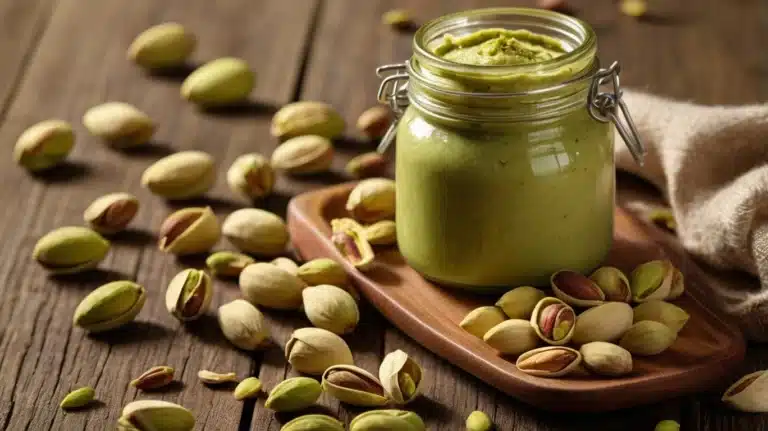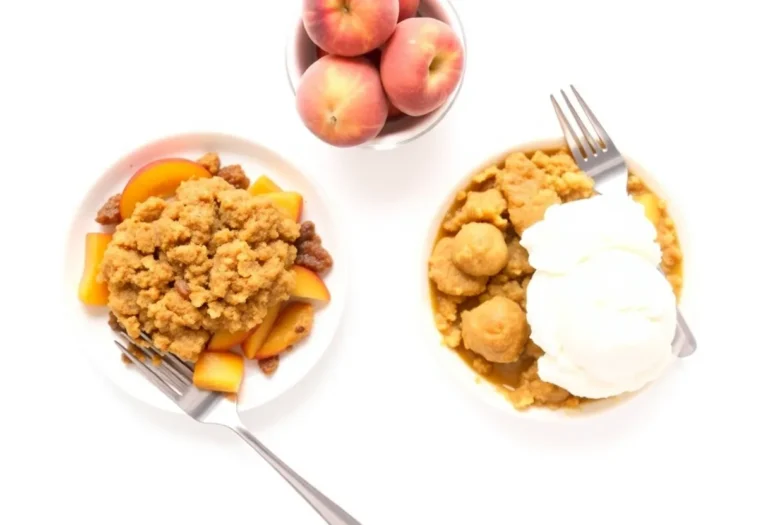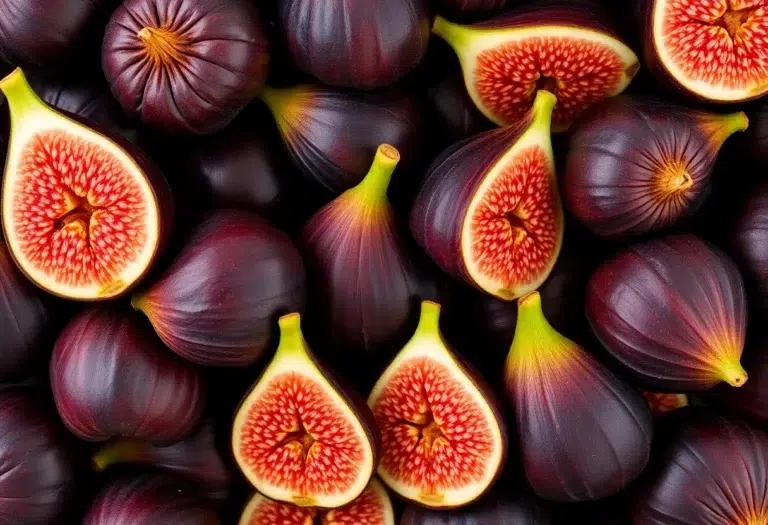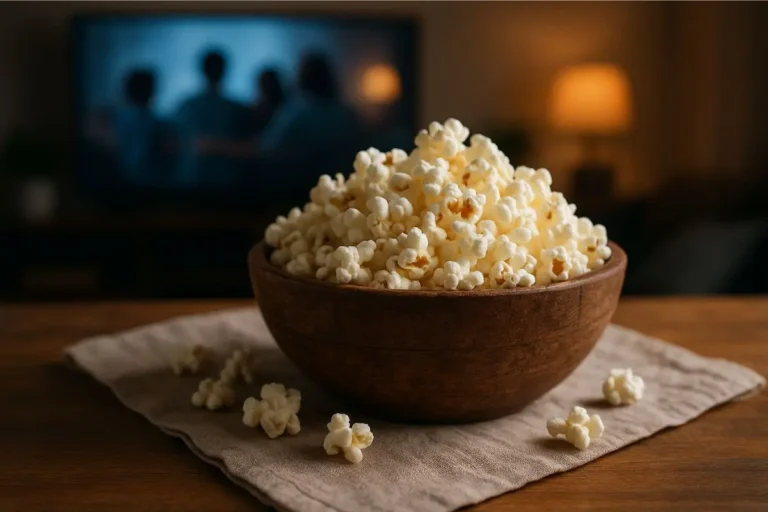Understanding Why is pistachio butter so expensive?
Ever wandered down the nut butter aisle, spotted pistachio butter, and gasped at the price tag? You’re not alone. Pistachio butter costs way more than your typical peanut or almond butter, and there’s a good reason (actually, seven good reasons) for that.
Unlike peanut butter, which is as common as a Monday morning coffee spill, pistachio butter is a specialty item. From the cost of raw pistachios to the complex processing involved, every step in its production drives up the price.
But is it really worth the splurge? Or is this just another overpriced health trend? Let’s crack into the details and find out.
What Makes Pistachio Butter Unique?
Pistachio butter isn’t just another nut spread—it’s a gourmet experience. With its naturally vibrant green hue and rich, creamy texture, it stands apart from the usual suspects like peanut and almond butter.
Here’s what makes it special:
- Flavor Explosion – Pistachio butter has a naturally sweet, slightly earthy taste that’s deeper and more luxurious than other nut butters.
- Texture Matters – It’s ultra-creamy yet retains a slight graininess, making it feel more indulgent.
- Aesthetic Appeal – That green color isn’t just for show; it indicates high-quality antioxidants and nutrients.
Pistachios aren’t just delicious; they also have a strong reputation for being a powerhouse of nutrition. No wonder demand is on the rise!
The Growing Popularity of Pistachio Butter
Pistachio butter isn’t just for fancy toast anymore. It’s popping up in smoothies, desserts, and even savory dishes. Thanks to its unique flavor and health benefits, it’s becoming a must-have for foodies and health-conscious eaters alike.
Health Benefits That Drive Up Demand
Pistachio butter isn’t just trendy—it’s packed with nutrients. Consumers are willing to pay extra for a product that not only tastes good but also delivers serious health perks.
Nutrients and Antioxidants in Pistachios
Pistachios are rich in:
- Healthy fats – Great for heart health and satiety.
- Protein – More than most other nuts, making it a great plant-based protein source.
- Fiber – Helps digestion and keeps you full longer.
- Antioxidants – Support skin health and fight inflammation.
With all these benefits, it’s easy to see why pistachio butter is a hot commodity.
Comparing Pistachio Butter to Other Nut Butters
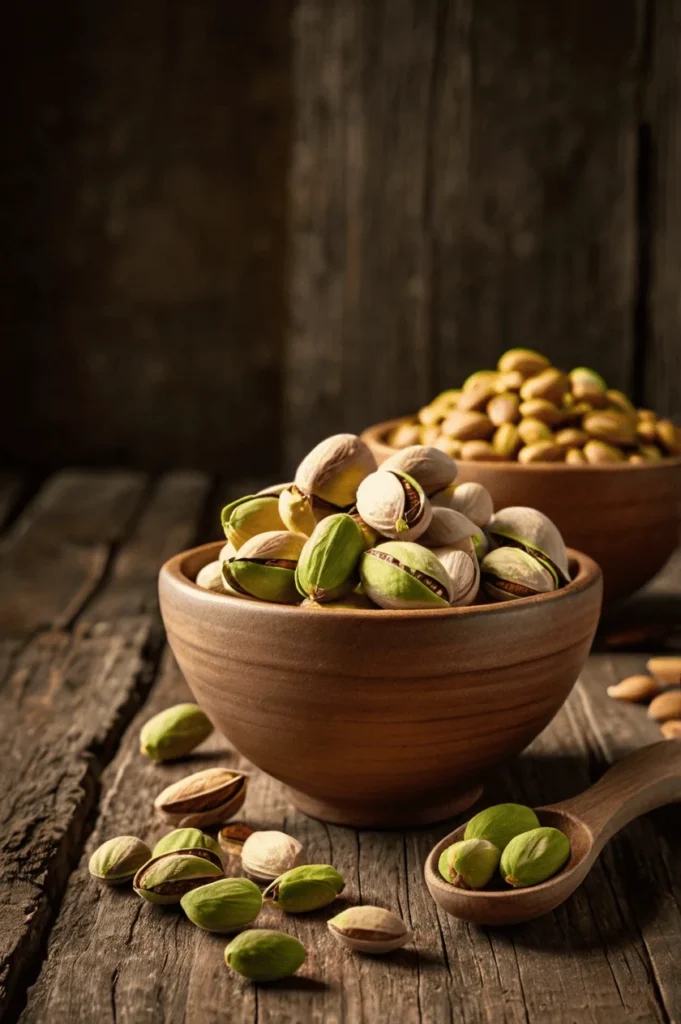
How does pistachio butter stack up against peanut or almond butter? Let’s break it down.
Taste and Texture Differences
- Peanut Butter: Classic, rich, and slightly salty.
- Almond Butter: Nutty, mild, and a little grainy.
- Pistachio Butter: Sweet, earthy, and ultra-creamy with a slightly buttery finish.
Pistachio butter wins on flavor complexity, but that uniqueness comes at a price.
7 Reasons Why Pistachio Butter Is Expensive
If you’ve ever picked up a jar of pistachio butter, checked the price, and put it right back down—same. But what makes it so ridiculously pricey? Let’s break it down.
1. High Cost of Raw Pistachios
Pistachios aren’t exactly cheap, even in their natural form. Unlike peanuts, which are mass-produced at lower costs, pistachios are a high-value crop.
- Lower yield per tree – A single pistachio tree produces fewer nuts compared to peanut plants.
- Longer growing period – Pistachio trees take around 7-10 years to start producing commercially viable crops.
- Higher land costs – They require specific climate conditions, which limits where they can be grown.
This means that before we even get to making pistachio butter, the nuts themselves are already pricey.
2. Labor-Intensive Harvesting Process
Unlike peanuts, which grow underground and can be mechanically harvested, pistachios require more hands-on labor.
Why Pistachios Require More Manual Work
- Hand-sorting is necessary – Machines can’t easily distinguish between high-quality and damaged pistachios.
- Cracking and shelling require precision – The shells don’t pop open as easily as peanut shells.
- Roasting adds an extra step – Most pistachios used for butter-making need roasting, which adds to processing costs.
Limited Growing Regions
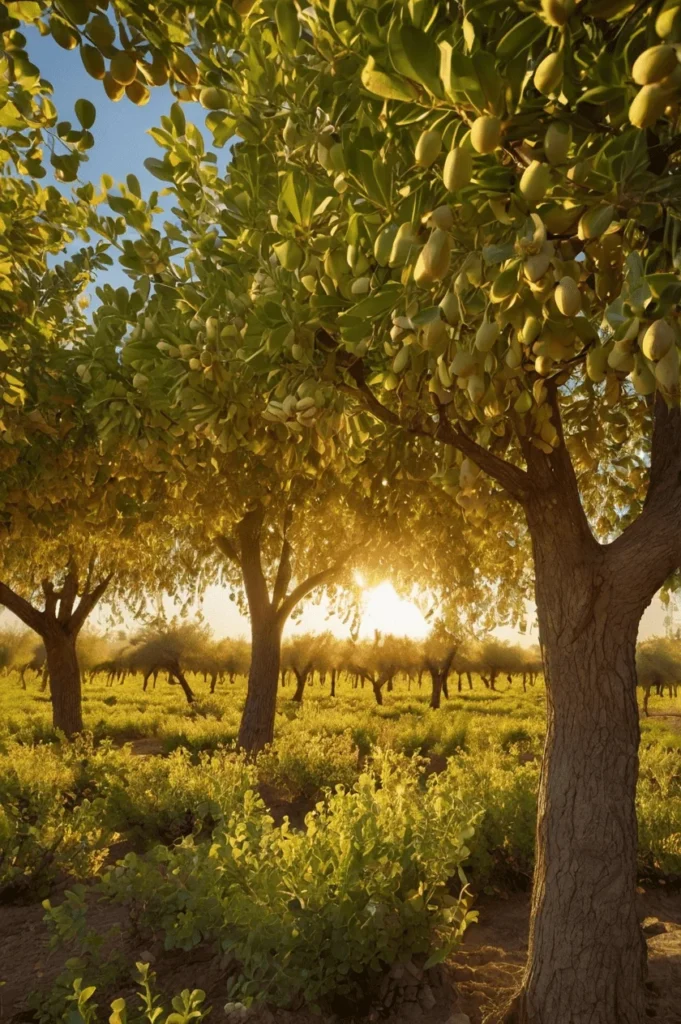
Pistachios thrive in hot, dry climates, making them a bit of a diva crop. They’re mainly grown in:
- The U.S. (California, Arizona, New Mexico)
- Iran and Turkey
- Some parts of the Mediterranean
Since pistachios can’t be grown just anywhere, supply is limited, making them inherently more expensive.
3. High Demand vs. Limited Supply
Supply and demand play a major role in pricing. The demand for pistachios has surged due to their health benefits, plant-based protein content, and use in premium food products.
But here’s the catch—there aren’t enough pistachios to go around! Unlike peanuts, which are grown in massive quantities worldwide, pistachios have a much smaller production base. When demand outstrips supply, prices skyrocket.
4. Processing and Manufacturing Costs
Making pistachio butter isn’t as simple as tossing nuts into a blender. The process involves multiple steps that add to the final price.
Shelling and Roasting Challenges
- Shelling pistachios is more expensive – Unlike peanuts, which have soft shells that machines can easily remove, pistachios need specialized processing.
- Roasting for better flavor – Roasting enhances pistachio butter’s taste, but it’s an extra cost.
- Grinding to the perfect texture – Since pistachios have a different fat content than peanuts or almonds, achieving a smooth butter requires high-quality processing.
Quality Control and Small-Batch Production
- High-end brands focus on small batches – This ensures freshness but increases costs.
- Strict quality control – Because pistachio butter is a gourmet product, manufacturers must maintain strict quality standards.
5. Import and Export Costs
While the U.S. is a major pistachio producer, many high-quality pistachios are imported from Iran and Turkey, where they’ve been grown for centuries. Importing nuts comes with tariffs, shipping fees, and regulatory costs, all of which get passed down to consumers.
Even domestic pistachios aren’t cheap—California’s water-intensive farming and labor costs make them expensive to grow and process.
Is Pistachio Butter Worth the Price?
At this point, you might be wondering: Is pistachio butter really worth it? The answer depends on what you’re looking for.
Taste and Versatility in Recipes
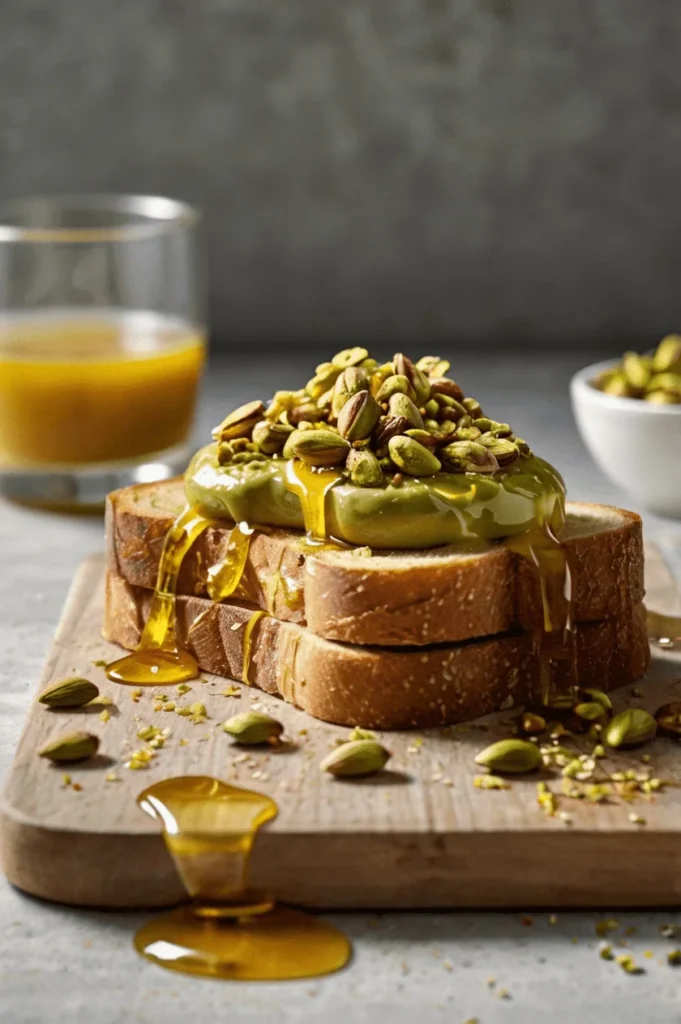
Pistachio butter isn’t just a spread; it’s a flavor booster for all kinds of dishes. You can use it in:
- Smoothies – Adds creaminess and a rich nutty taste.
- Baking – Works beautifully in cookies, cakes, and pastries.
- Savory Dishes – Makes an incredible base for sauces and salad dressings.
Nutritional Benefits vs. Cost
While it’s expensive, pistachio butter packs a serious nutritional punch. It’s:
- High in protein and fiber – Great for energy and digestion.
- Loaded with healthy fats – Supports heart health.
- Rich in antioxidants – Helps reduce inflammation and promotes overall wellness.
If you value premium ingredients and health benefits, pistachio butter is definitely worth the splurge—at least every once in a while!
How to Save Money on Pistachio Butter
If your love for pistachio butter is strong but your budget isn’t, don’t worry—I’ve got some money-saving hacks. Instead of dropping serious cash on a tiny jar, here’s how you can enjoy this green gold without breaking the bank.
Buying in Bulk or Wholesale
- Check warehouse stores – Places like Costco or Sam’s Club sometimes carry pistachio butter at a lower price per ounce.
- Buy pistachios in bulk – Whole, unshelled pistachios are often cheaper when purchased in bulk. Look for wholesale retailers or farmers’ markets.
- Look for discounts online – Websites like Amazon, Thrive Market, and specialty food sites often have sales or bulk discounts.
Making Homemade Pistachio Butter
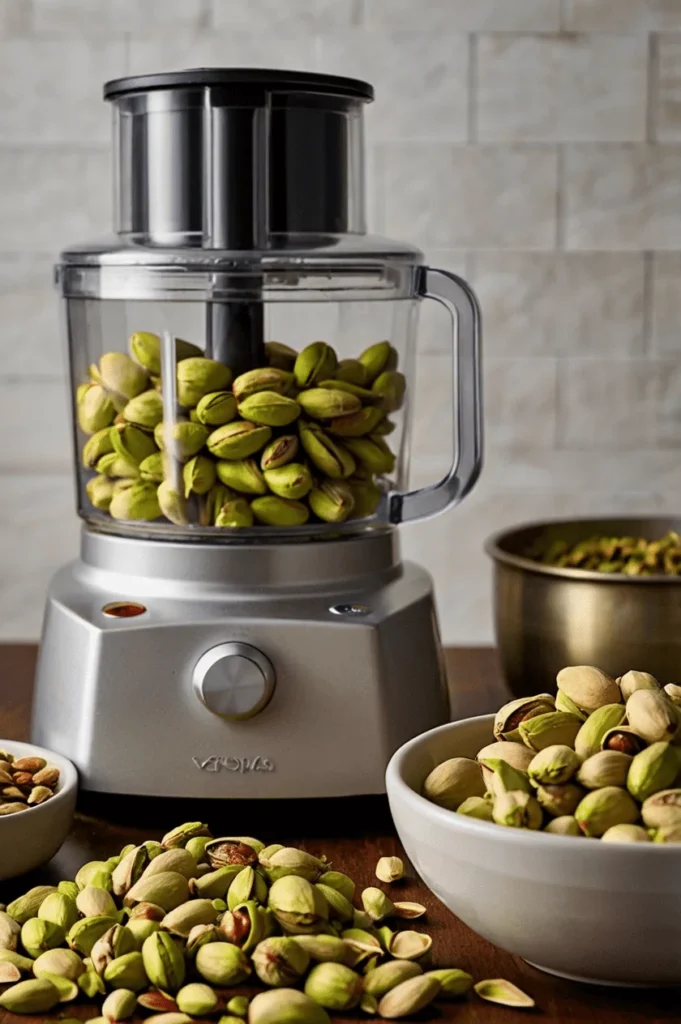
The best way to cut costs? Make it yourself! Homemade pistachio butter is fresher, customizable, and way cheaper than store-bought versions.
Choosing the Right Pistachios for DIY Butter
- Raw vs. Roasted – You can use either, but roasting enhances flavor.
- Shelled vs. Unshelled – Buying shelled pistachios saves time, but unshelled ones are often cheaper.
- Salted vs. Unsalted – If you prefer control over seasoning, go for unsalted.
Step-by-Step Guide to Homemade Pistachio Butter
Want to make your own? Here’s a super easy recipe:
Ingredients:
- 2 cups pistachios (shelled)
- 1 tbsp olive oil or coconut oil (optional)
- ½ tsp salt (optional)
- 1 tbsp honey or maple syrup (optional for sweetness)
Instructions:
- Roast the pistachios – Preheat the oven to 350°F and roast for 5-7 minutes (optional but recommended for flavor).
- Blend – Add pistachios to a food processor and blend for 5-10 minutes, scraping down the sides occasionally.
- Add oil if needed – If the mixture is too thick, add oil to help smooth it out.
- Sweeten or season – Add honey, maple syrup, or salt to taste.
- Store – Transfer to a jar and keep in the fridge for up to 3 weeks.
Now you’ve got delicious, homemade pistachio butter at a fraction of the cost!
Affordable Alternatives to Pistachio Butter
If pistachio butter is out of your price range, there are other nut butters that can offer similar flavors and textures.
Which Nut Butter Is the Cheapest?
Here’s a quick price comparison per ounce:
| Nut Butter | Average Cost (per oz) |
| Peanut Butter | $0.20 – $0.40 |
| Almond Butter | $0.40 – $0.70 |
| Cashew Butter | $0.50 – $0.80 |
| Pistachio Butter | $1.00 – $2.00 |
As you can see, pistachio butter is by far the most expensive. If you’re looking for a budget-friendly alternative, peanut butter remains the cheapest.
Best Substitutes for Pistachio Butter
If you want a similar flavor without the high price, consider these options:
Flavor Comparisons of Alternative Nut Butters
- Cashew Butter – Mild, creamy, and slightly sweet, making it the closest alternative.
- Almond Butter – Nutty with a bit of crunch, but not as rich.
- Sunflower Butter – A nut-free alternative with an earthy, roasted flavor.
Nutritional Differences
| Nut Butter | Protein (per tbsp) | Healthy Fats | Fiber |
| Pistachio Butter | 3g | High | 1g |
| Peanut Butter | 4g | Moderate | 1g |
| Almond Butter | 3.4g | High | 1.5g |
| Cashew Butter | 2.8g | High | 0.5g |
While cashew butter has the closest taste, almond butter offers a better balance of protein and fiber.
FAQs About Why Is Pistachio Butter So Expensive?
Got questions? You’re not alone. Here are the most common questions about pistachio butter and why it costs so much.
Why is pistachio butter expensive?
Pistachio butter is pricey due to the high cost of raw pistachios, labor-intensive harvesting, limited growing regions, and expensive processing. Unlike peanuts, which are mass-produced, pistachios require more time, effort, and resources to cultivate and turn into butter.
Which nut butter is the cheapest?
Peanut butter is the most budget-friendly option, costing as little as $0.20 per ounce. Almond and cashew butters are pricier, but still significantly cheaper than pistachio butter, which can cost $1.00 to $2.00 per ounce.
Why are pistachios costly?
Pistachios are expensive because they take years to grow, require specific climate conditions, and have a lower yield per tree compared to other nuts. Additionally, harvesting and processing pistachios require more manual labor, adding to the cost.
Does pistachio butter go bad?
Yes, pistachio butter can go bad, especially if it’s not stored properly. Because it contains natural oils, it can turn rancid over time. Store it in an airtight container and keep it refrigerated to extend its shelf life.
How should pistachio butter be stored?
To keep pistachio butter fresh:
Store it in the fridge for up to 3 months.
Keep it in a cool, dark pantry if you’ll finish it within 2-3 weeks.
Always stir before using, as natural oils tend to separate.
Can I make pistachio butter at home?
Absolutely! Homemade pistachio butter is easy to make and much cheaper than store-bought versions. All you need are pistachios, a food processor, and a little patience. Roast, blend, and enjoy!
Is pistachio butter healthier than peanut butter?
Both have their benefits, but pistachio butter is higher in antioxidants and healthy fats, while peanut butter has more protein. If you’re looking for a nutrient-dense option, pistachio butter wins—but if you’re on a budget, peanut butter is the better choice.
Follow Lazy Meal Prep on your favorite platform and become part of our cozy kitchen crew:
- Instagram – for behind-the-scenes peeks and weekday inspiration
- Facebook – to swap ideas, tips, and share what you’re cooking
- Pinterest – to save and plan your week the lazy-smart way
Let’s make cooking easier, together one delicious bite at a time.

